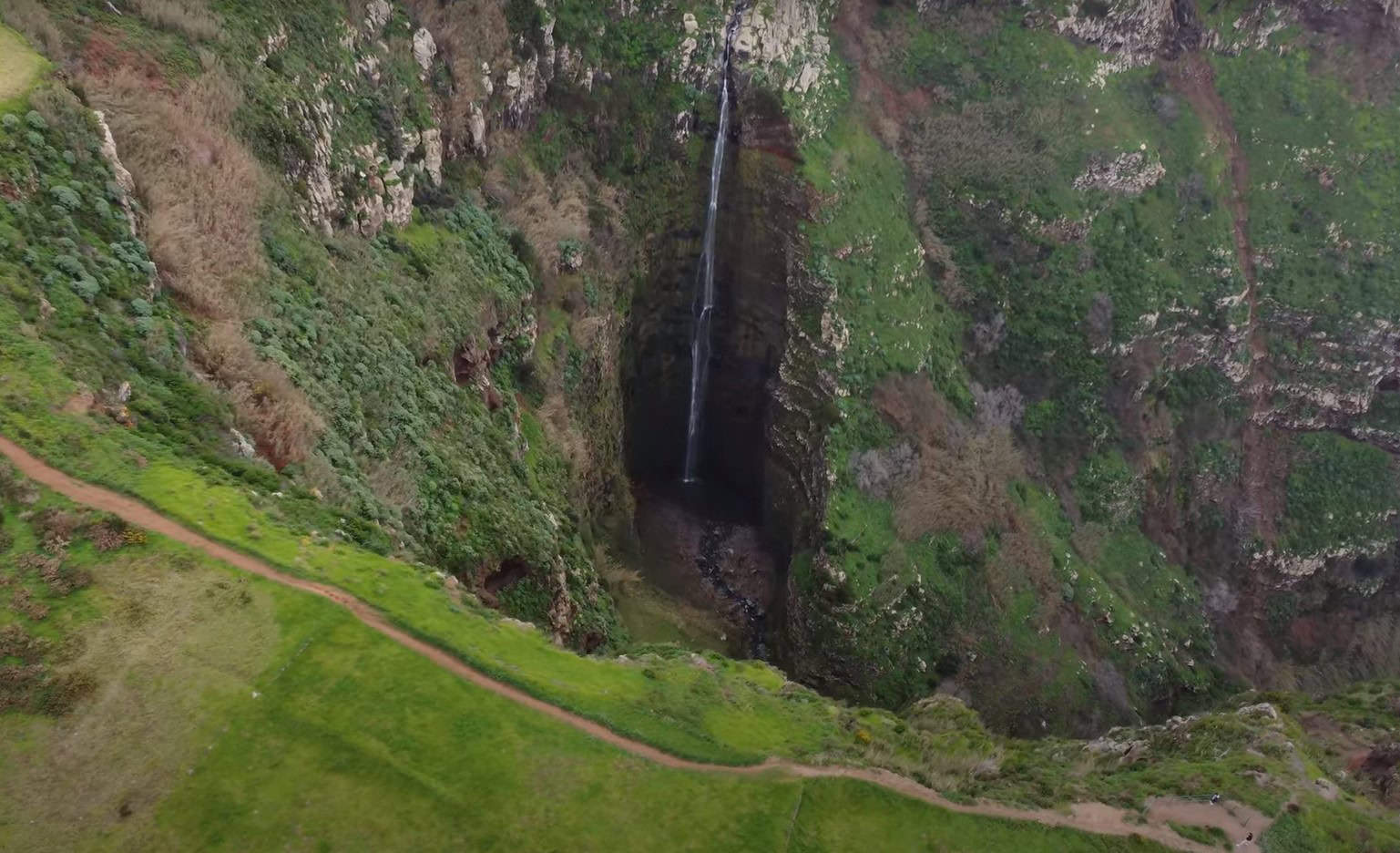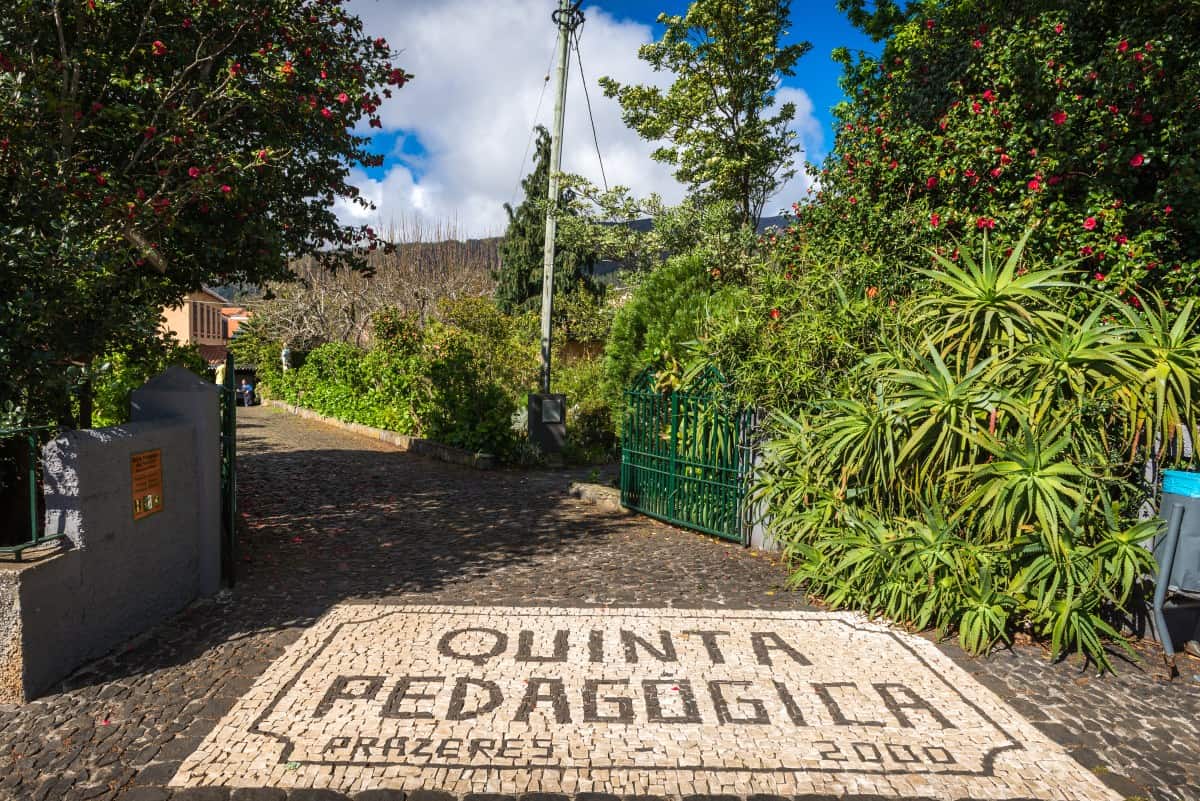Our guided tours provide a fascinating insight into the history, landscapes and everyday life on Madeira. On our Ponta Prago tour, you’ll explore the sunny south-west of the island.

Your day begins at the most westerly point on the island – marked by the lighthouse at Ponta do Pargo. Constructed in 1922, the lighthouse is Portugal’s highest – standing on the 300m high Ponta da Vigia cliffs, it’s elevated west-facing lamp is visible up to 50km away.
A short drive along the west coast brings you to the miradouro overlooking the 140m high Cascata da Garganta Funda; one of the highest waterfalls on the island. As you’d expect, the waterfall is at its most impressive after a few days of winter rain – if you’re visiting in the dry summer, it’s still an impressing gorge and the ocean views are stunning.

Next, you’ll head north to Achadas da Cruz, to ride the cable car which connects the village of Achadas with its farmlands 500m below on the rocky coast. It’s quite a steep ride compared to some of the other telefericos on the island – well worth it for the spectacular views but perhaps avoided if you suffer from vertigo.

Lunch is normally in village of Paul do Mar, which serves some of the best fresh fish on the island. Before the road arrived in the 1960s, the village was only accessible by boat or via the steep cobbled path which zig-zags down the sea cliffs (and requires a good head for heights). The centre of Paul do Mar is barely two cobbled-streets wide, and you’d be forgiven for thinking you were lost in the narrow backstreets of an Italian fishing village.

In the afternoon, you’ll visit the Galeria dos Prazeres – a space created to promote local Madeiran artists and to bring international artists’ work into the community in Prazeres. At the time of writing, there’s an installation of work from Porto-based artist Pedro Huet and a permanent exhibition by Lisbon-based photographer Camilla Watson.
Just next door is the Prazeres School Farm at Quinta Pedagógica dos Prazeres – a family-owned small-holding which produces it’s own jams and liqueurs from their native herb gardens and orchards. The quinta also offers free educational workshops and outreach programmes to schools across Madeira.


Dropping back down to the coast, you’ll arrive at the town of Jardim do Mar. As with neighbouring Paul do Mar, access to the town was limited until the expansion of the road network in the 1960s. Jardim has three popular pebble beaches – Portinho, Enseada at Ponta Jardim. The latter was particularly popular with hardcore surfers – the construction of a controversial new seawall in 2003 has impaired waves which were once considered some of the best in the world.

Continuing along the south coast, you’ll arrive in the harbour town of Calheta – the largest town on the south-west coast. Calheta’s marina is a nice alternative to the much larger harbour in Funchal, with a close-knit, friendly sailing community and a sheltered beach.

You’ll also have a chance to visit one of the island’s few surviving rum distilleries: the Engenho da Calheta. Perhaps better known for its fortified wines, the Engenho sugar cane to produce white rum – the main ingredient in Madeira’s most infamous cocktail: Poncha. The factory is a living museum, with 19th Century production methods and technology still in use today.

Your final stop of the day is Ponta do Sol. There’s something of a Cornish-feel to the village with its naturally-sheltered bay – and its sunny microclimate and sublime sunsets are famous across the whole of Portugal.


Our private tours are flexible – our guides have a plan but they won’t hold you to a strict timetable. If you have any specific interests, we can create a personalised tour just for you. We specialise in personalised holidays to Madeira and Porto Santo. If you’d like to talk to one of our experts, please call on 017687 721070 or drop us a line via our Enquiry Form.








Follow us online